Site Tour/Talk 07 Festival Hall
"The charm of Festival Hall interpreted from acoustics"
Date and time: February 18, 2019 [Mon] 18:30 to 20:00
Venue: Festival Hall
Participation fee: 1,000 yen
Capacity: 50 people (advance application required / first-come, first-served basis)
Guest: Hiroshi Kondo (Osaka Philharmonic Orchestra) and Takayuki Hidaka (Architectural Acoustic Design / Research Fellow of Takenaka Institute of Technology)
Moderator: Kosuke Kato (Director, Innovation Planning Division, Innovation Co-Creation Division, Industry-Academia Co-Creation Division, Acoustics / The University of Osaka Co-Creation Organization, Lecturer, Business Engineering Department, Graduate School of Engineering)
Moderator: Chieko Kinoshita (Associate Professor, Co-Creation Division, The University of Osaka Co-Creation Organization/Art Area B1 Steering Committee member), Tetsu Kubota (Associate Professor, Osaka College of Music/Art Area B1 Steering Committee member)
Opened in 1958 and rebuilt in 2013, Festival Hall has received so much support from musicians and music fans as it is described as "the sound drops from the ceiling." But, in fact, what reason is that? This event is an attempt to unravel the secrets through a large logical experiment.
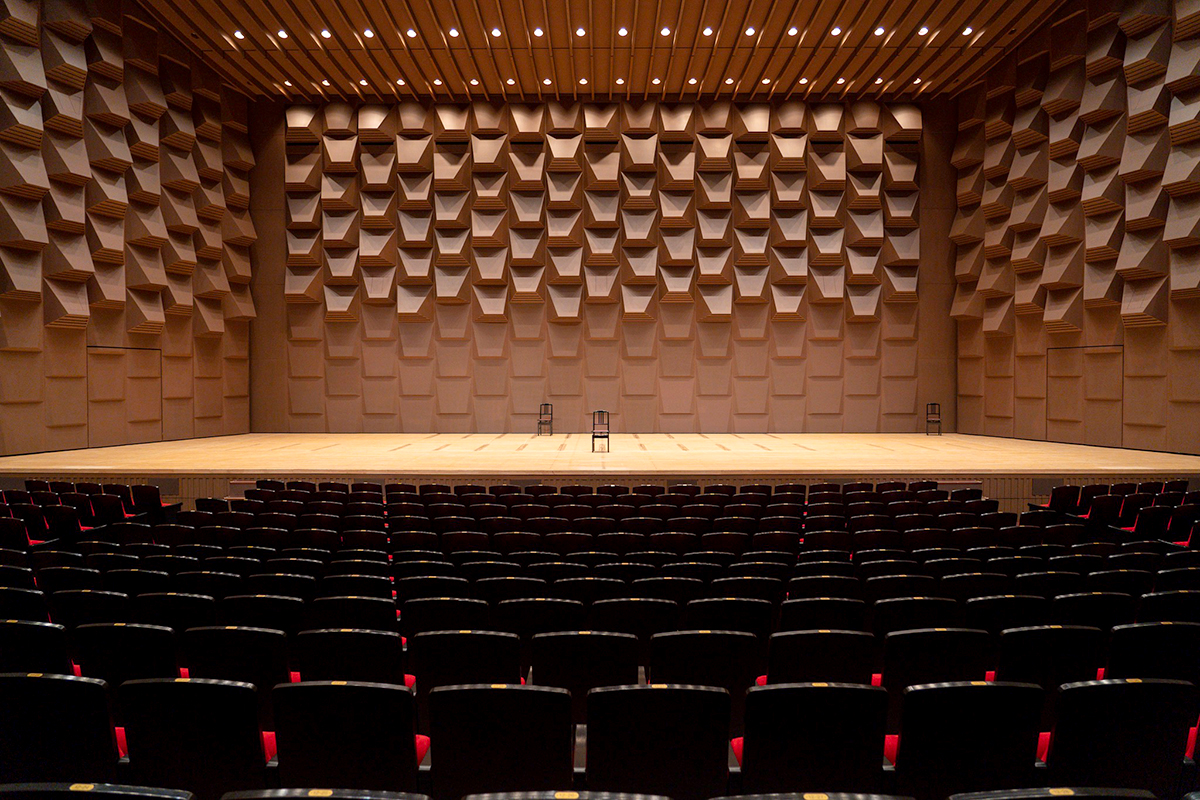
Inviting Hiroshi Kondo, the top cello top player of the Osaka Philharmonic Orchestra, not only to have several short phrases play in various places on the stage, but also participants moved to the seats on the first floor, behind the first floor, and the third floor to "listen" the sound of the sound. In addition, Takayuki Hidaka, who is involved in the sound design of theaters and halls at the Technical Research Institute of Takenaka Corporation, and Kosuke Kato, a researcher of acoustics, will explore the secrets of Festival Hall scientifically and physically.
Go up the large staircase with red carpets to the entrance foyer, main foyer, and 2700 seats. You can experience the magnificent space of Festival Hall, which combines coolness and luxury, if you visit a concert or the like, but you will not be able to see it almost empty. Approximately 140 participants gathered at this night's listening comparison event, which is held during the maintenance period between the performance and the performance, to experience a different hall than usual.
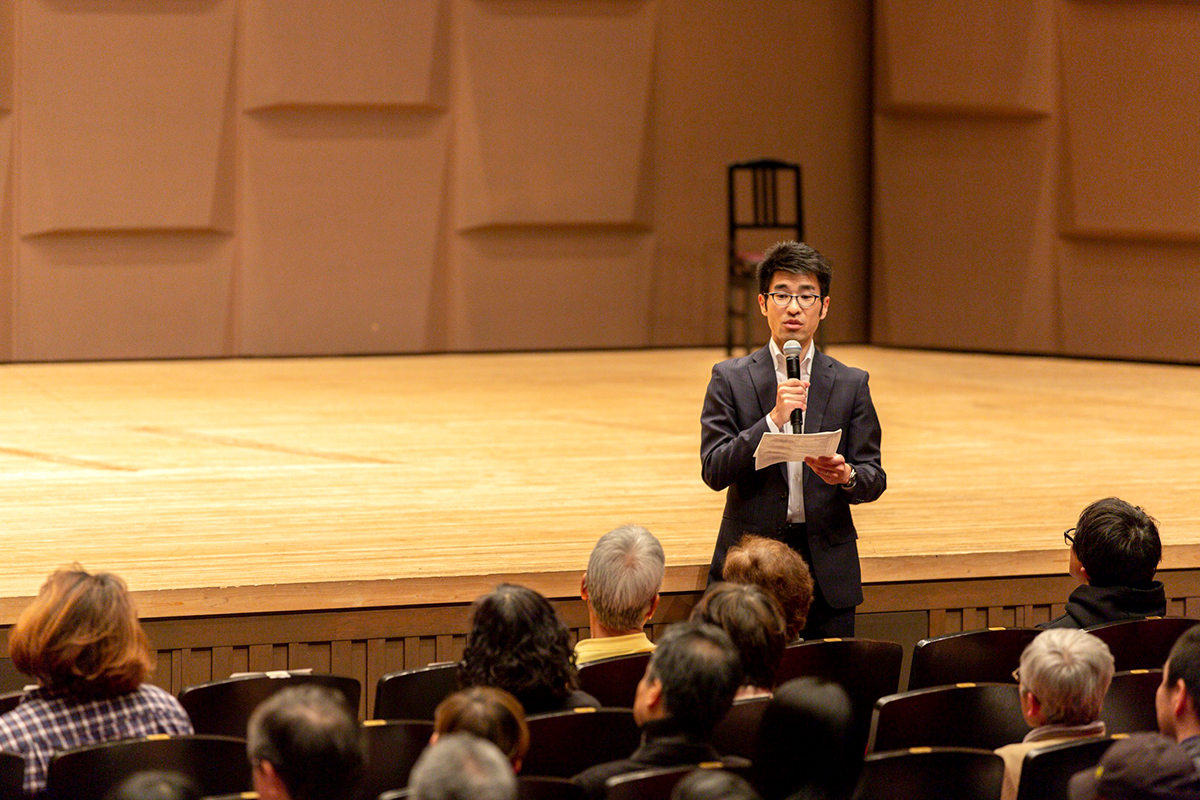
After the introduction of the performer Kondo and the commentator, we went to the experiment immediately. Tonight's song is "Swan" by Saint-Saance and some phrases from Bach's "Unaccompanied Cello Suite No. 3". We will compare the acoustic characteristics from a performance of about 1.5 minutes in total.
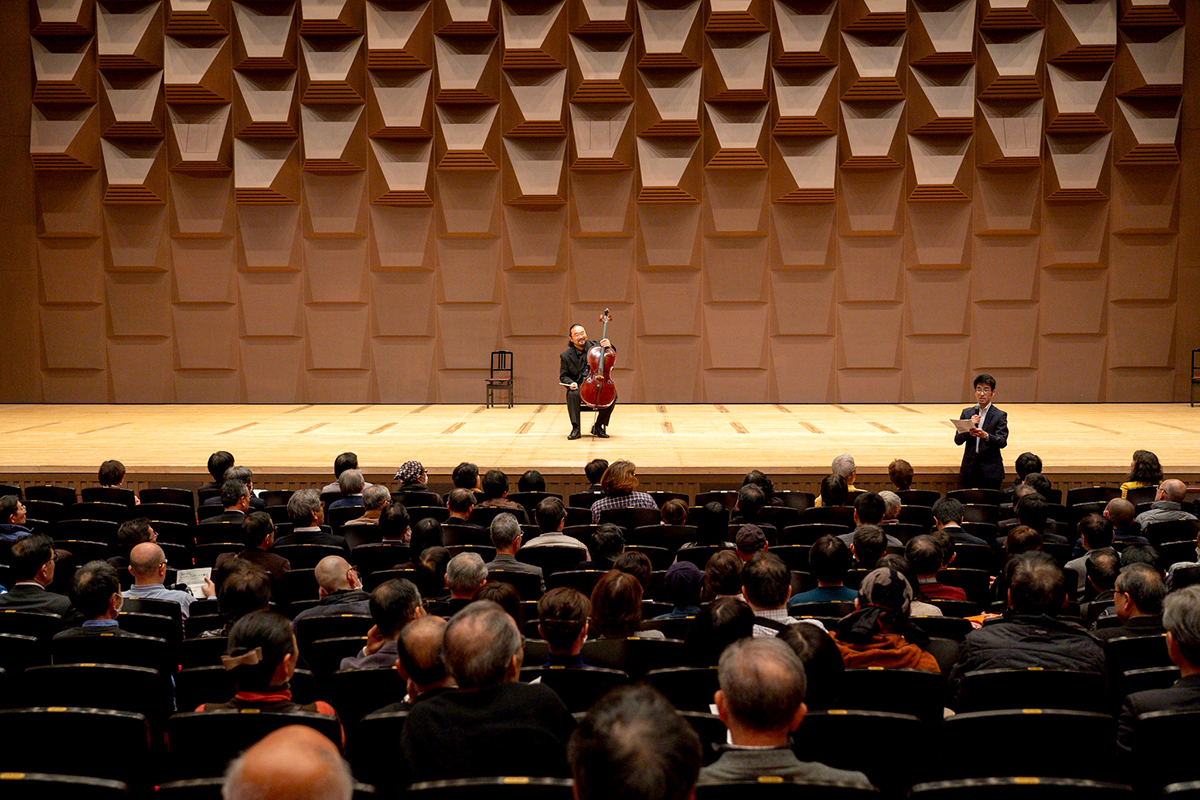
First, front seats on the first floor. It is a performance in a normal situation, but it sounds good. The 140 people who remember on this basis will then move backwards on the first floor.
The performance I heard here gave the impression that the sound was more coherent than the front. Is it because the second floor seat is above my head and the ceiling is low? There is a feeling that sound fits in the space.
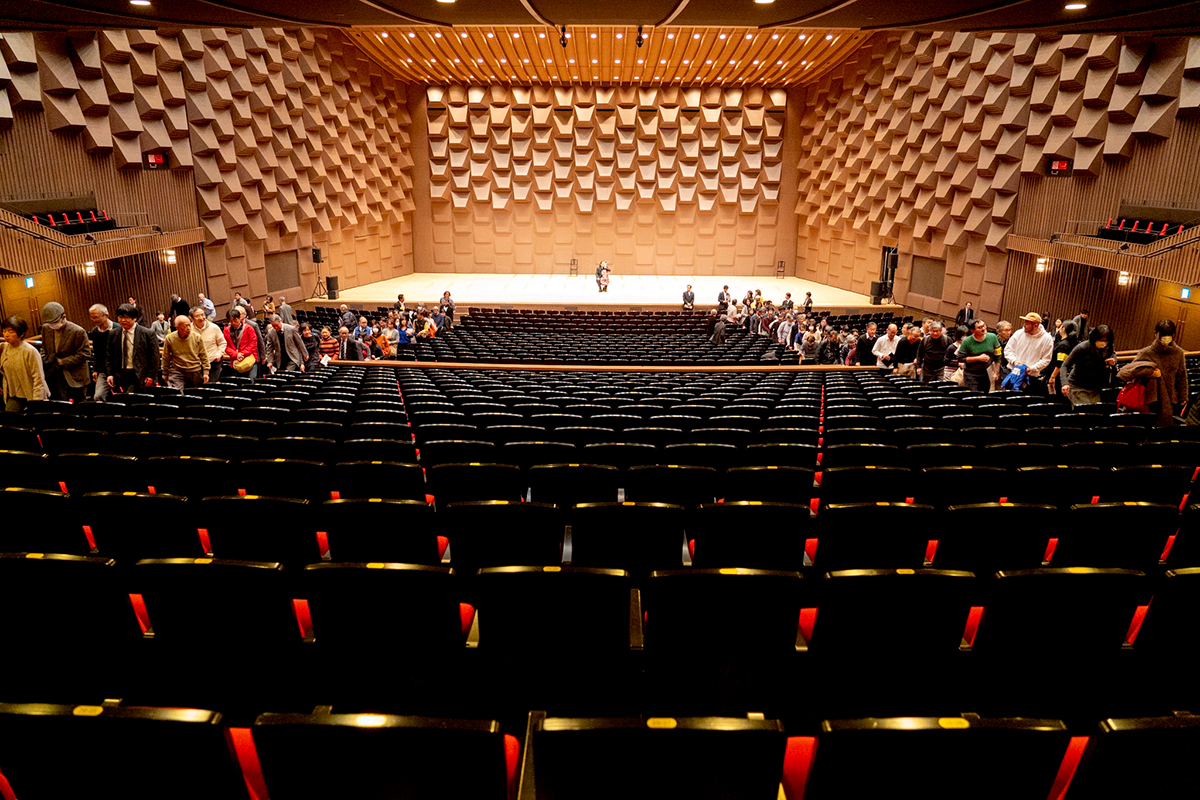
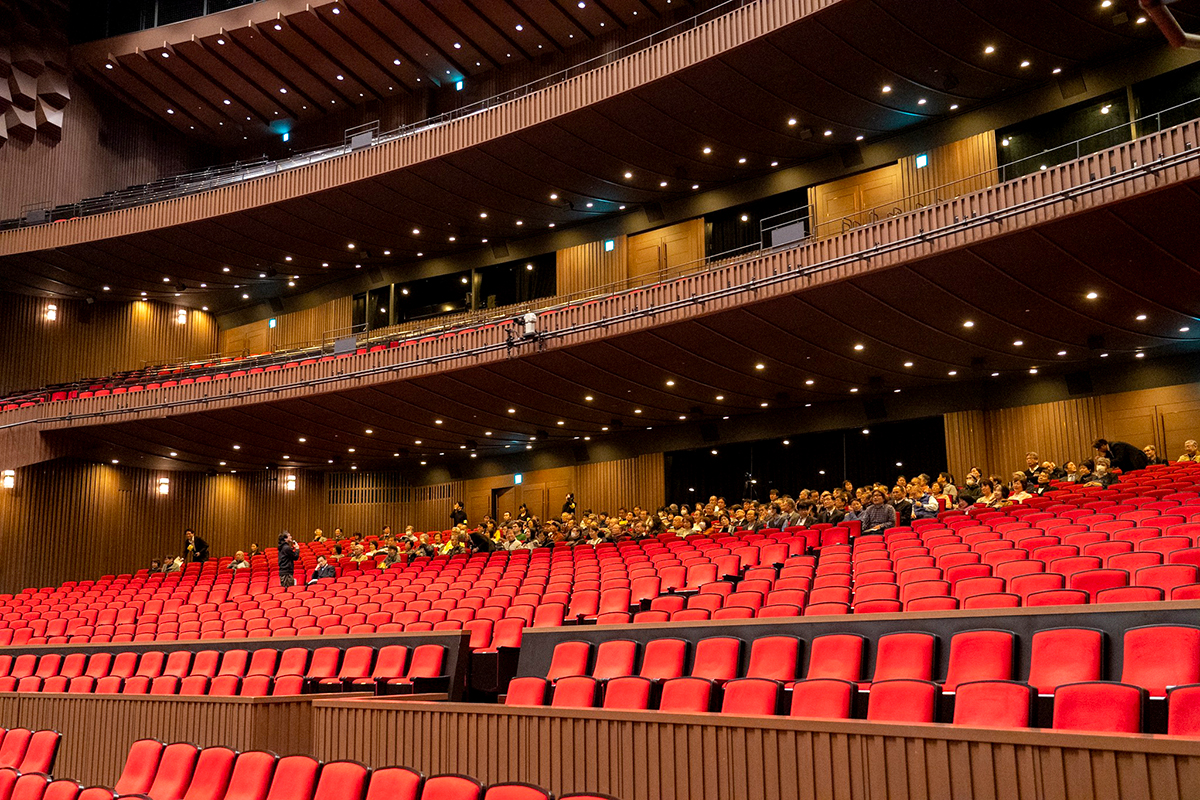
Take the escalator to the highest 3rd floor seat. Seat with a little glimpse at the distance from the gradient seat and the first floor. And Mr. Kondo's performance. What is surprising here is that it sounds almost the same impression as in front of the first floor. There is no extra response, and you can physically understand that you are playing on stage properly. Of course, there are individual differences, but the author liked the sound he heard on the third floor. Participants will return to the first floor and participate in the next experiment while sharing their impressions with each other.
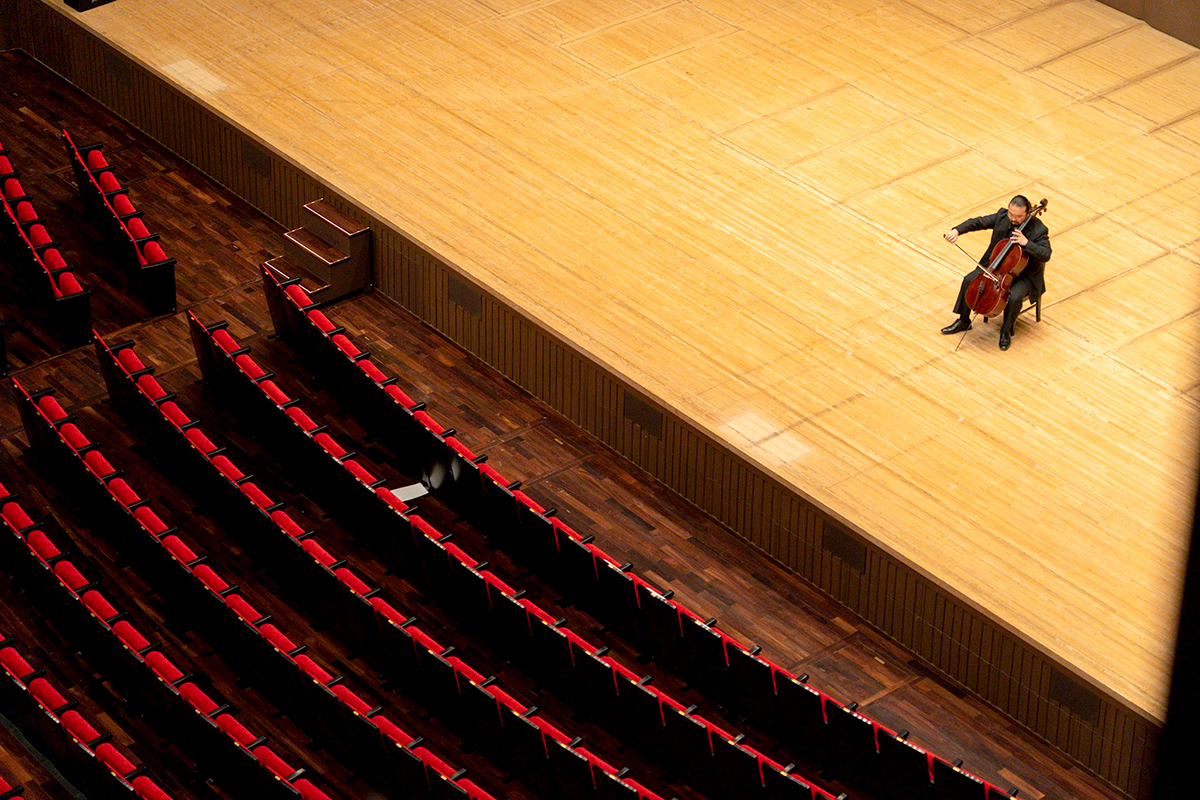
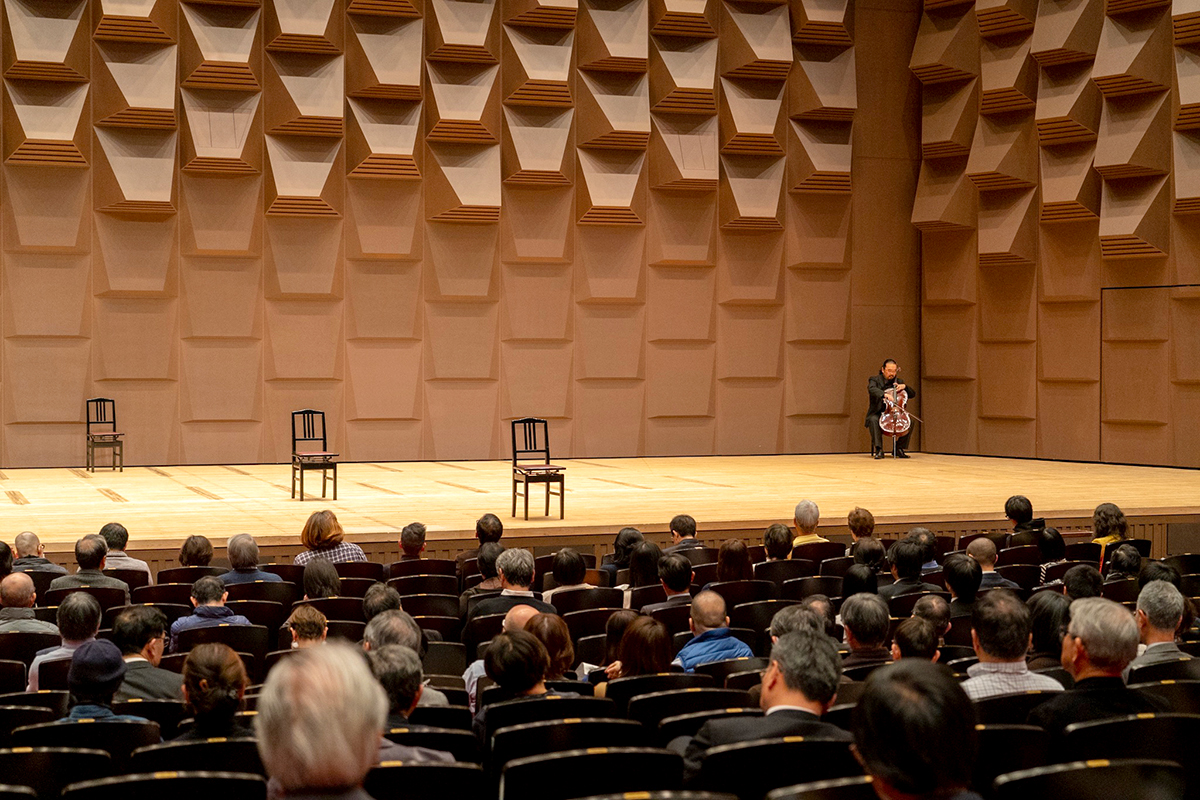
This time, the participants decided to listen to Mr. Kondo's performance, who moved on the stage without changing their position. The center of the stage, the front of the stage where the audience seats pass, the back of the stage with the reverberation board, and the right back corner surrounded by the reverberation board. Depending on the distance from the audience, the author himself received the impression that the sound was getting closer or farther practically and physically, and the sense of response increased, but how did the performer feel? Mr. Kato, the moderator, will interview Mr. Kondo, who has finished the performance.
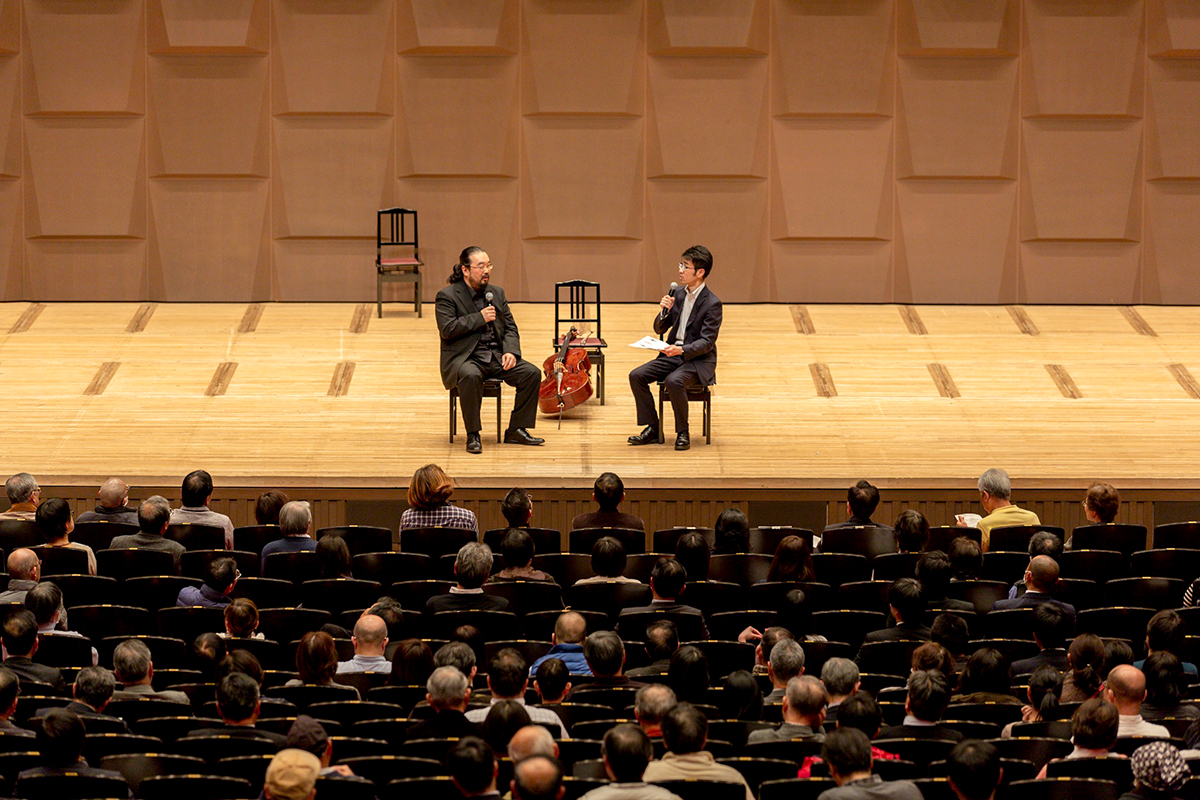
Kondo Here (Festival Hall) has many opportunities to play before the rebuilding, and of course it is a friendly place that I have visited as an audience. What surprised me most when I'm new is that no matter where I listen, the sound doesn't change. In a seat away from the stage, the sound usually goes far away, but it doesn't make you feel it.
On the other hand, from a performer's point of view, it is characterized by the fact that the sound is almost unchanged even if there are no customers or even if it is full at the time of the performance. When there are many people, the sound is inevitably absorbed and the sound is weakened, but it is not at all. Sound is not visible with the eyes, but I feel strongly that there is sound.
Kato: Do you change the performance depending on the size of the venue?
Kondo: I'm careful not to play hard just because it's a big hall. Since my cello is old, it is easy to squeak when I force it, so I am conscious of not being able to force it on the contrary. In addition, technically speaking, in the sounding hall, the front and back sounds overlap, so the tempo is shortened so that the length of the accent and stacker can be changed.
It was my first time playing here and there on the stage like today, but in my usual performance, I try to listen to the reflection sound from the echoboard, so the difference was clear. I don't mind because there is no sound in front of the stage, and I can easily see the echoing sound flying in the back. The right and back corner was sandwiched between the walls, so it was difficult to understand the sound.
Following the experiment and interview with Kondo, Mr. Kato and Mr. Hidaka talked about acoustics. Hidaka, a leading sound design expert, has also translated Jurgen Meyer's "Hall Sounds and Music Performance" (Ichigaya Publishing Company), a conductor and sound scholar in the past.
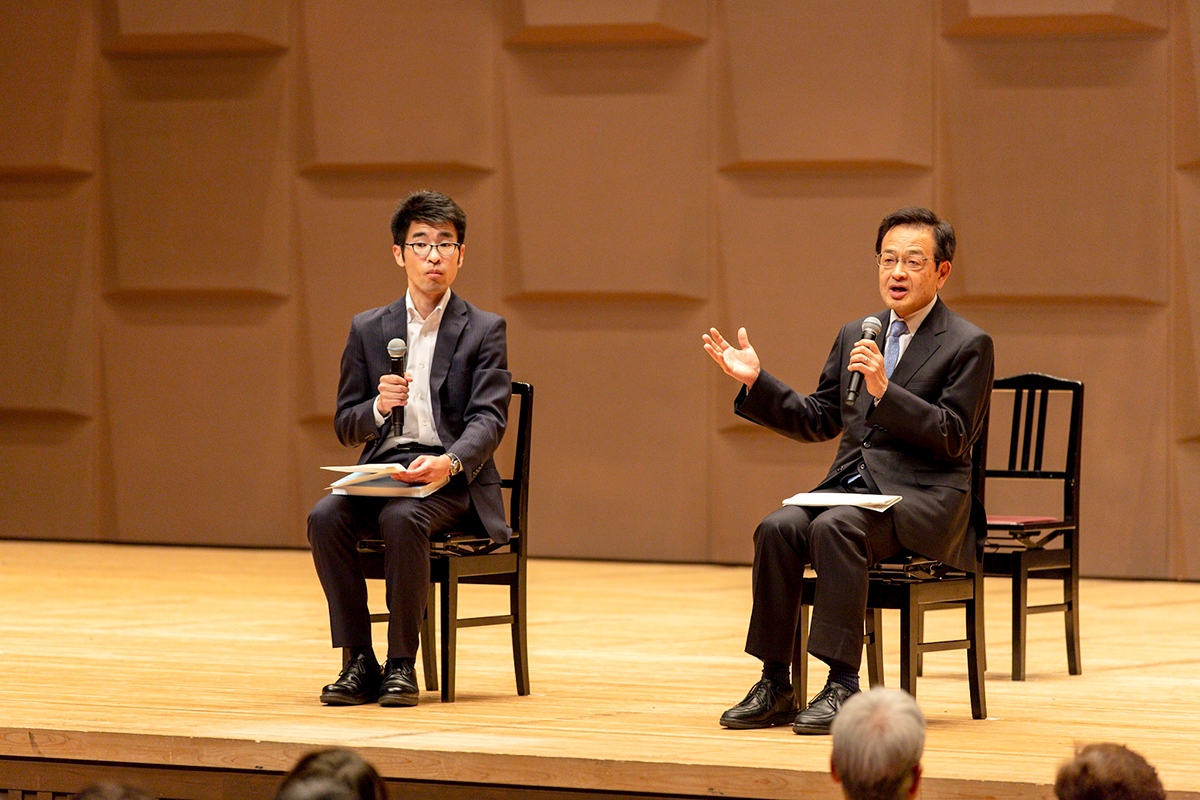
What kind of sound is required at the Kato Concert Hall?
The good sound of Hidaka is difficult because it is left to the sensitivity of each individual. There are two main options. People who grew up listening to music in stereo prefer the strong sound of sharp attacks because they have good ears. On the other hand, people who play on their own tend to prefer to put themselves in the dynamic sound in space, even at the expense of the particle size of the sound. Just as wine has sweet and dryness, the way the hall sounds is different.
In that sense, today's experiment can be said to be proof of that. The front of the first floor seat is well-grained and there is a sense of presence, and the back of the first floor seat feels like the sound reflecting walls and ceilings combined. I was surprised that the volume of the 3rd floor seats did not change despite the distance, but the sound changes. Perhaps a performer-type person likes the third floor?
How is the design of Festival Hall Kato?
Hidaka: This is wonderful. From the standpoint of sound design, the number of seats of 2,700 is quite severe. Because there are many seats, the reaction will change. In addition, experiencing the performance is important not only for listening but also vision. Humans perceive a variety of information from the expression and movement of the performer on the stage, but if the size of the stage exceeds about 35 meters, it becomes difficult. That's why I draw a circle with a radius of 35 meters from the center of the stage, and create a theater so that the audience can be placed on the fan-shaped extension line. Festival Hall is a particularly successful example of that.
It is also worth paying attention to the production of sound reflectors. In the orchestra, a large number of performers are placed on the stage, so it is important for the performers to reflect the sound from the sky. That's why the shape of the ceiling is designed to draw an arc. In addition, by combining this curve with the reverberation version, the information of the sound flying back is reflected so that the sound can reach the audience seats.
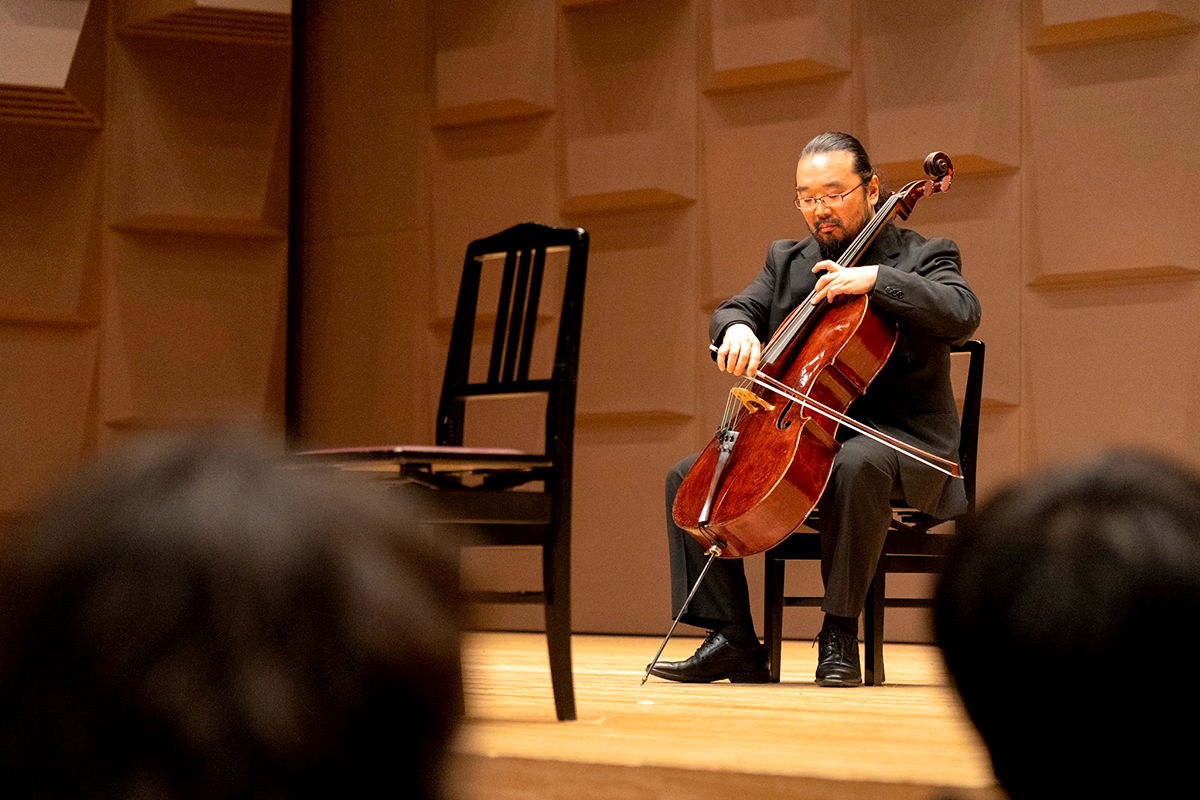
After completing a fulfilling crosstalk that talks about the mechanism of sound that cannot be easily understood (listening) just by listening to the concert, the ingenuity of the performers and hall designers, etc., a special performance by Mr. Kondo was held in a hurry Was. While listening to two songs, “Saraband” from Unaccompanied Cello Suite No. 3 and “Bird Song” from folk song Catalonia, arranged by Pablo Casals, the participants rejoiced the sound of Festival Hall.
[text: Taisuke Shimanuki]
Hiroshi Kondo | Hiroshi Kondo
Osaka Philharmonic Orchestra cello top player. After working at Tokyo University of the Arts, he graduated from France's Ecole Normal and Boulogne Conservatory. After working at the New Japan Philharmonic and the Tokyo Pops Orchestra, he continues to the present. In addition to working as a soloist at Carnegie Hall in New York and the United Nations Conference Center, he has performed with many domestic and international orchestras such as the Shinnihon Philharmonic, the Osaka Philharmonic, and the New York Philharmonic. As a leader, he also focuses on teaching backwards at Osaka College of Music, Kobe College, and Osaka University of Arts.
Takayuki Hidaka | Takayuki Hidaka
Worked at the Technical Research Institute of Takenaka Corporation. Graduated from The University of Osaka Graduate School of Engineering in 1979, and currently works at the Technical Research Institute of Takenaka Corporation. In charge of theater planning, architectural acoustic design, and noise prevention practice. He served as a visiting professor at the National Institute of Science, Italy (1995), a visiting professor at the Kyushu Institute of Design (1998-99), and a part-time lecturer at the Graduate School of Kyushu University (2007-2011). Doctor of Engineering (Kyoto University), Engineer (Department of Applied Science), Fellow of the American Society of Acoustics. He is involved in the sound design of 20 theaters and halls, including the New National Theatre and Tokyo Opera City.
Kosuke Kato| Kosuke Kato
When I was a student at the Faculty of Engineering, Kobe University, who was absorbed in singing operas and musicals, "What is the difference between a hall that is easy to play and a hall that is difficult to play?" I thought, "How can I play using the sound of the music hall?", and started to become a researcher. Since then, in 18 years, he has been scientifically researching the effects of the sound of music halls on musical instrument performance and singing, and published research results at the Society of Acoustics in Japan, the United States and Europe, as well as public lectures for citizens. Ph.D. (Academic)